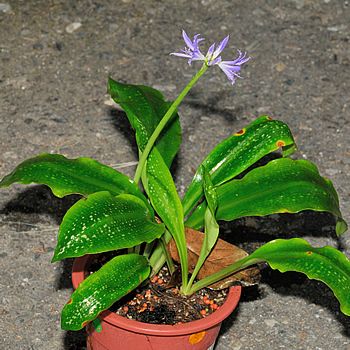Also known as the blue amaryllis (Griffinia liboniana), griffinia is a bulbous and flowering plant, native and endemic to the Atlantic Forest, a Brazilian ecosystem of great biodiversity. This beautiful plant is still rare in cultivation. The habitat, seriously altered by deforestation, combined with predatory collection, makes the Griffinia liboniana a threatened species.
Its leaves are green, leathery, elliptical, and petiolate, distinguishing it from other species of the Griffinia genus. A unique feature is the white spots sprinkled on the leaf blade. Griffinia’s flowers are large, lilac or blue, and appear in umbel-type inflorescences. These inflorescences are supported by long, erect floral stems that stand out above the foliage. Under good cultivation conditions, griffinia can bloom up to three times a year.

This rare Brazilian bulbous plant should be more widely cultivated, considering its beauty and ease of cultivation. Despite its moderate to slow growth, it is an excellent choice for planting in garden beds and masses. Ideally, shaded locations should be chosen, or even in pots and planters, where griffinia skillfully decorates indoor environments. Even without flowers, this plant maintains its showy and beautiful foliage, adding charm to any space.
For ideal cultivation, griffinia should be planted in partial shade, or diffused light, in fertile, humus-rich soil, enriched with organic matter, light and well-draining. Originating from humid forests, this species appreciates tropical heat and humidity, remaining leafy throughout the year. Irrigation should be adapted to the vegetative period and climate, keeping the soil moist during growth and flowering. After this period, it is advisable to reduce watering a bit.
In cooler areas, such as in subtropical or temperate climates, the blue amaryllis becomes dormant in winter, which allows for even further reduction in watering or even suspending it. It is important to note that the plant fears frost or intense cold. Interestingly, despite being undemanding in lighting, it blooms even in light shade. Fertilize with balanced fertilizers, such as NPK, in a 10.10.10 ratio. As its growth is moderate to slow, use a smaller dose compared to other garden plants.
The propagation of griffinia can be done by separating the small bulbs formed around the mother plant during the annual replanting or through fresh seeds, which germinate easily.

